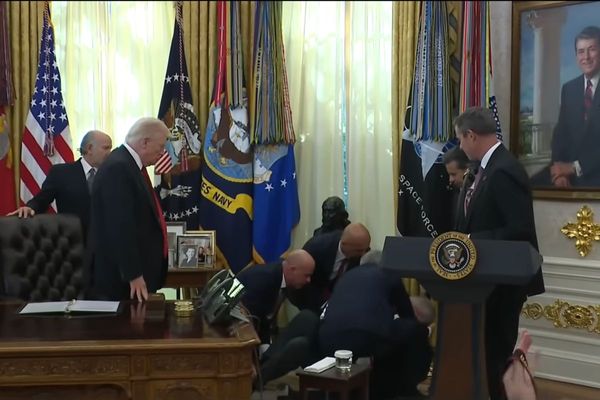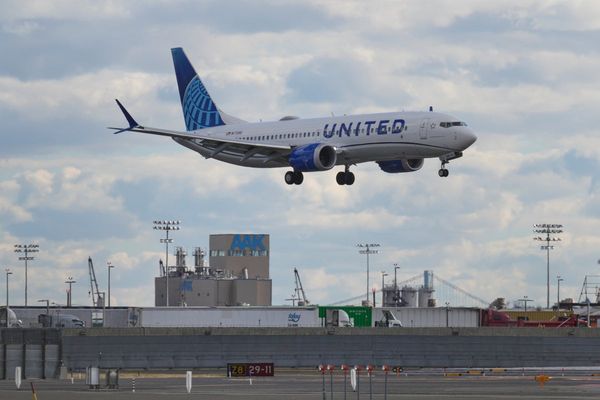
A damning report into bus services in New South Wales says $10bn is needed over the next four decades to boost the network which has huge gaps in Sydney’s western suburbs where population growth is strongest.
The network was ill-equipped to meet the needs of an expanding Sydney, the latest report from the NSW Bus Industry Taskforce has found.
The second report by John Lee found there was an “urgent need” to fund “essential minimum local or school services in the short term”.
It found many suburbs in western Sydney were under-serviced while at the same time absorbing much of the city’s growth.
It described the region as “an area with limited existing public transport and where the private car is currently and is likely to remain, the predominant transport mode until a viable alternative public transport solution is available”.
The report stated across Sydney 235 local routes failed to meet “minimum service standards” and that services to these routes should increase to every 30 minutes. These were “predominantly located in western Sydney”.
“Especially in western Sydney, outer metropolitan and regional areas, some local routes may only operate as frequently as every two hours or less, and some do not operate during evenings or on weekends.”
The report found many bus services in western Sydney “do not cater well for shift workers and those working in the nighttime economy”.
The report made extensive recommendations, including urging the government to upgrade bus services that carry 40% of all public transport passengers but receive 2% of transport capital expenditure.
It stated Sydney needed 40 “rapid routes”, 80 “frequent routes” and 1,000 “local services”. The city currently has three rapid routes, 17 frequent routes and only 600 local routes.
The report also argued for an increase in new routes in “growth precincts”, specifically through Penrith, Blacktown, Fairfield, Campbelltown and Camden, where many new homes are being built.
Lee is a former chief executive of the State Transit Authority who also ran private bus companies before being appointed to lead the taskforce in May 2023.
He said the lack of investment in the bus network was “shameful” – describing it as the “forgotten mode of public transport”.
“Buses are the largest public transport mode in the state and it needs well-thought-through plans to be implemented to fix this neglect,” Lee said in a statement.
“We have recommended a strong, detailed and scalable plan for the government to consider. That means more money for services, bus stops, road priority and smart people delivering the plan.”
The NSW government responded by asking Transport for NSW to examine how some of the recommendations could be implemented – including developing short- and long-term bus plans, improving access to zero emissions buses and working with councils to improve their capacity to enhance public transport infrastructure.
The state transport minister, Jo Haylen, said the report’s recommendations could help deliver “the biggest improvement to bus services that NSW has seen in a generation”.
“For too long bus services have been the forgotten mode of transport in NSW. Tens of thousands of passengers rely on the bus network and we need to do better.
“Too many growing communities were neglected because the former government had no plan for what their future bus services would look like. We now have a plan to make sure those communities get the bus services they need.”
The third and final report from the taskforce is due by May.
The tram and bus divisional secretary of the Rail, Tram and Bus Union, David Babineau, said the union welcomed the report, but believed its focus should be on the effects of privatisation.
“Addressing the myriad of issues created by privatisation needs to be a priority if we’re going to improve our bus services long term,” he said.
“That includes fixing the two-tiered workforces, chronic underpayment and other workplace issues which are playing a big part in the recruitment and retention issues we’re facing”.
It comes as a report from the University of Western Sydney argues that an inefficient transport system is holding back the economy in the region.
The Unlimited Potential report from the Centre for Western Sydney says “Sydney’s public transport system, designed to connect the east and the west, inadequately does this.”
The report urges the state government to “prioritise extending Western Sydney Airport Metro to the north to Tallawong, to the south via Leppington, and to the east to Westmead.”
The report also outlines how the NSW government could support the region’s booming economy by focusing on future industries and enhancing skills.
Western Sydney makes up almost a quarter of the NSW economy, and is the third-largest city economy, with a GRP of just over $155bn in 2021–22.
Part of the reason for its growth is its rapid increase in population, forecast to reach over 3.4 million by 2041.
WSU Chancellor, Prof Jennifer Westacott, launched the plan in Parramatta on Thursday and said the region was on the verge of an economic transformation.
“We can no longer rely on population growth to drive the economy, but we need to invest in our people and jobs of the future.”
“I want Western Sydney locals to have high-paying jobs, access to the skills they need, and no longer be forced to drive 40 kilometres each day to work,” she said.







